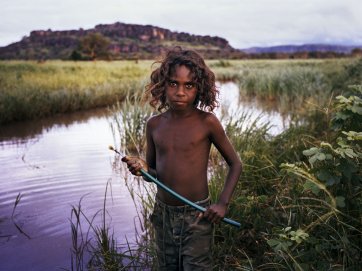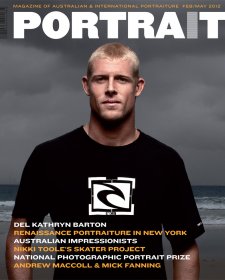The British artist Julia Margaret Cameron is considered one of the nineteenth century’s pre-eminent photographers. A mother of six, Cameron took up photography in her late forties after receiving the gift of a camera in 1863. Largely self-taught, she converted a glassed-in chicken coop into a studio, therein and thereafter producing a body of work that was as notable then as now for its beauty and inventiveness.
Yet as a photographer who eschewed what she considered ‘mere topographic photography’ for an exploration of the medium’s poetic, allegorical potential, Cameron’s work - in which she sought to ‘ennoble photography and secure for it the character and uses of High Art’ - was not universally admired. She was accused by some of being technically slovenly or inexpert, the ‘daring originality’ of her portraits, according to one reviewer in 1865, coming at ‘the expense of all other photographic qualities.’
To see Cameron’s portraits now, of course, is to understand her experimentation with focus, composition and lighting and her recognition of photographic portraiture’s potential for invention and performance as characteristics which most distinguish her work from other photographs of the period. Conceived of as those that are ‘not only from the Life, but to the Life, and startle the eye with wonder and delight’, Cameron’s portraits, many now pushing 150 years old, demonstrate the potency of a singular vision. They may also illustrate too the necessity of experimentation, or challenge to prevailing visual custom and convention, in the successful negotiation of what cultural historian Geoffrey Batchen has called the ‘dilemma at the heart of all photographic portraiture’ - that between ‘the easy mechanical resemblance that a photograph provides and the something-more-than-resemblance that the
word portrait seems to promise’. Though often-questioned and long since undone, the myth that photographs are able to seize something of a sitter’s inner life persists. The line between a mere ‘likeness’ and the sense of presence or personality implied by a ‘portrait’ is indeed fine and often unquantifiable. Yet it continues to inform contemporary portrait photographers and, consequently, underpins the National Portrait Gallery’s approach in collecting and exhibiting their work.
Like the four National Photographic Portrait Prizes preceding it, the 2012 competition attracted in excess of 1,000 entries from which a small team of judges - National Portrait Gallery Director, Louise Doyle; Executive Director of Artspace Sydney, Blair French; and National Portrait Gallery Curator, Joanna Gilmour - had to select an exhibition demonstrating the enduring appeal and effectiveness of photography as a portrait medium. Like its predecessors too, the 2012 National Photographic Portrait Prize received entries that took in a wide spectrum of photographic portraiture as it is practiced in Australia today. From baby photos to boudoir shots and encompassing everything from the profound and painful to the saccharine and sentimental. Portraits taken by professional and amateur photographers. On film and (predominantly) in quick and manipulable digital formats. Images of sitters who are famous along with numerous portraits of those who are obscure. Sitters known and loved by those who’ve captured them and others whose transactions with the photographer were anonymous, momentary or even inconsequential. Photos taken, seemingly, with little ceremony or thought for composition and those that were carefully, sometimes elaborately, staged.
Though the resulting exhibition may seem to some deliberate or contrived, the short-listing of works was not directed by a desire to accurately sample the cross section of entries, nor by an intention to create a collective portrait of a community’s demographics and cultural diversity. Neither was the selection guided by preference for certain styles, by sentimentality and soft spots, or by factors such as a sitter’s fame or notoriety and that of a photographer’s profile and success. Though narrowing down a field of nearly 1500 photographs to only forty-six was an exacting process, it was one facilitated and determined unquestionably by the strong sense of presence in each of the final images: by their success and effectiveness as portraits. By implication, these images demonstrate also the varied and innovative ways in which practitioners negotiate photographic portraiture’s capacity for capturing mood and, in particular, the manner in which it might offer insights to its subjects. The selected portraits encompass those created in close-up and in classic simplicity of circumstances - a backdrop, a sitter, a pose, a camera - such as in the works by Rod McNicol, Georgia Metaxas or Nikki Toole; and those that are the result of complex sets, symbolism and role play. Some sitters look away from the camera and others don’t. There are figures in studios and in backyards and landscapes. Others are photographed with objects or within settings that signify something of spirits and histories: the late artist Margaret Olley in her famously cluttered Sydney home, for example, or Melbourne composer and musician Gil Askey in full flight. These portraits exemplify too the medium’s predilection for conveying feelings and emotional states: the intensity and painfulness of grief, injustice or illness; warmth, honesty and forthrightness; wit and exuberance; stillness, introspection and contentment. In a society saturated with photographs, often consumed via the slick and pervasive language of magazines or advertising, these are indeed portraits which are distinct in being able to arrest and startle the eye. They are those which, in their quality of presence, activate our deep capacity for inquisitiveness and our fascination with faces and people. They help to show us why it is that, sometimes, photographs can transcend the limits of likeness, gloss and documentary, and remind us instead of portraiture’s vivid possibilities.
The National Photographic Portrait Prize is on display from 20 March until 20 May 2012.



















